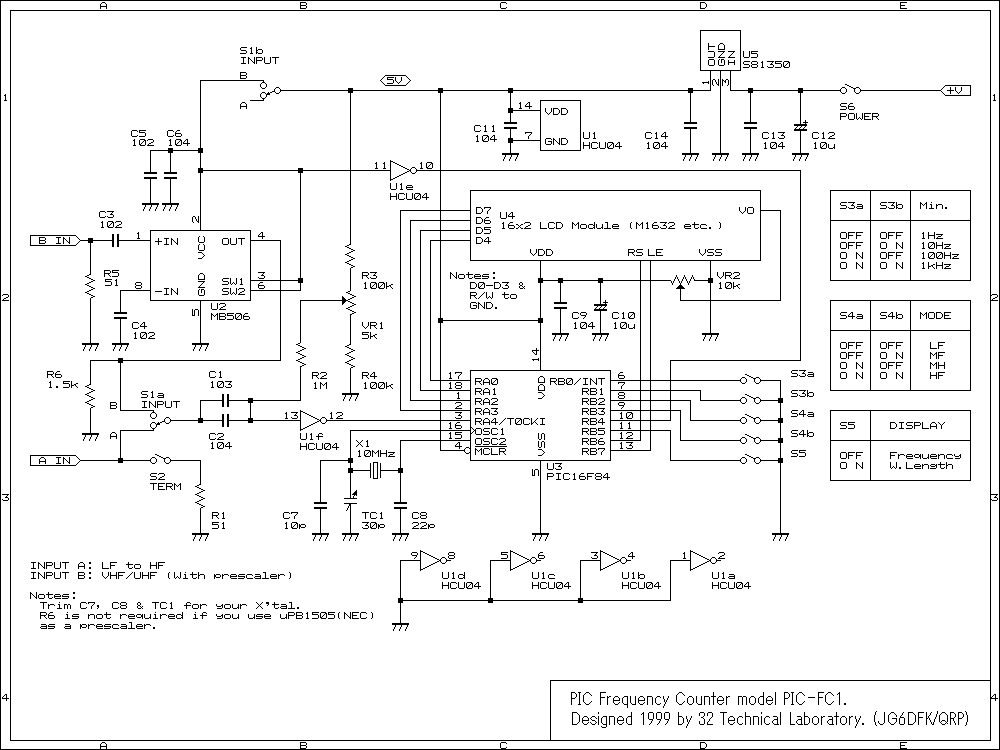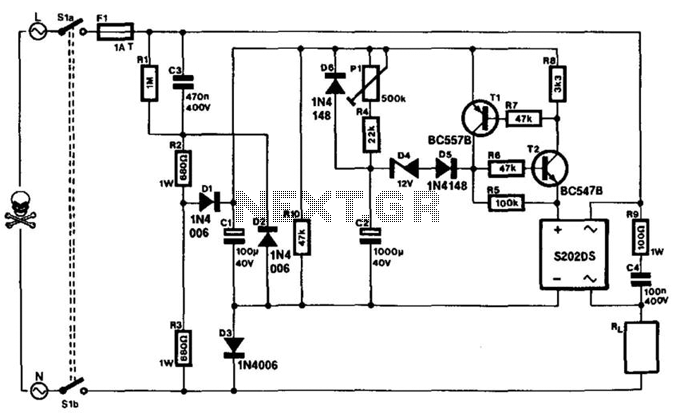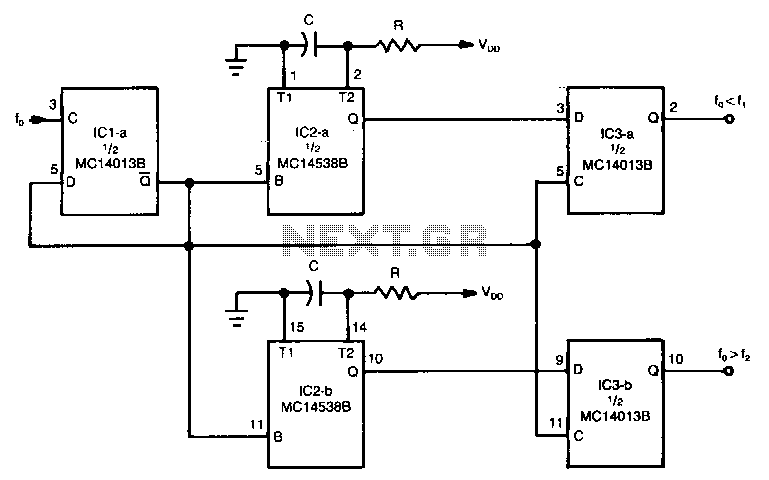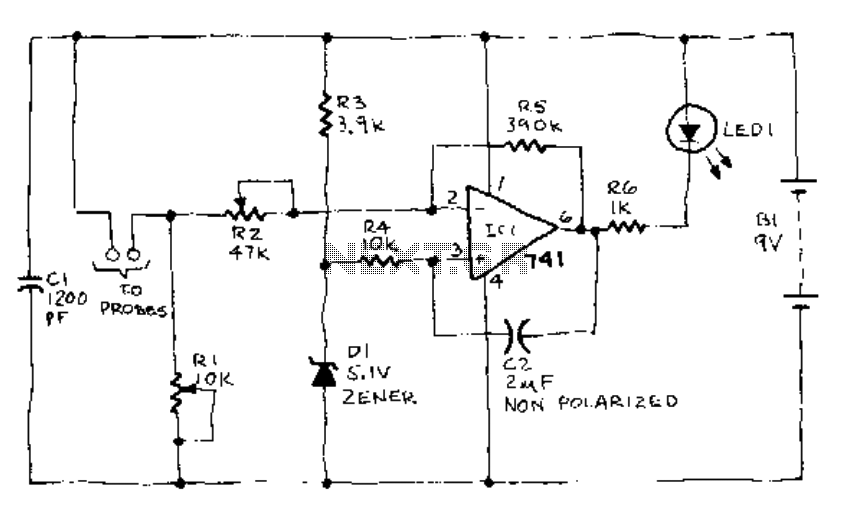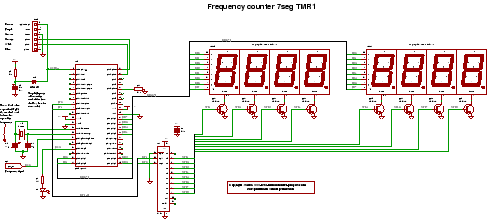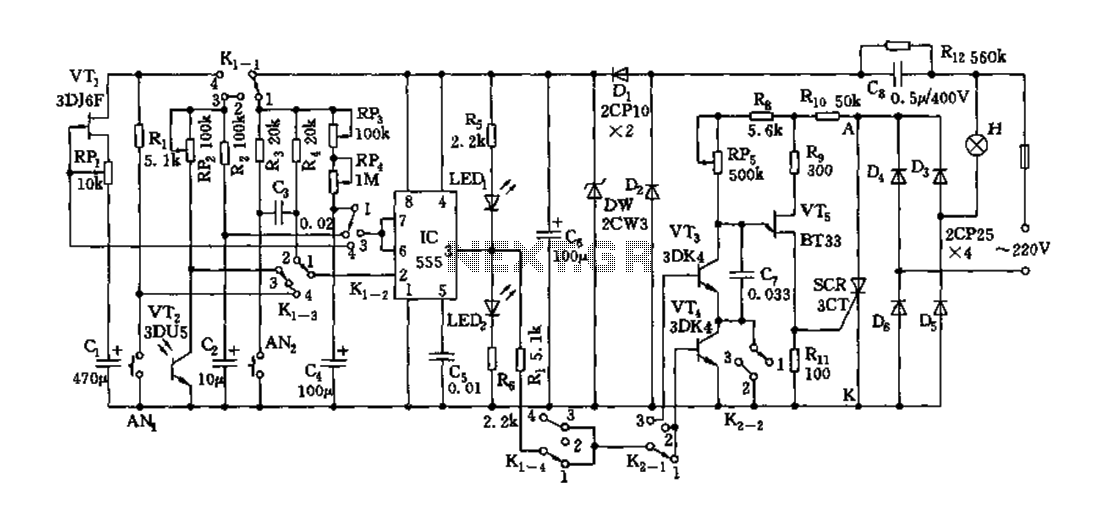
Mains Frequency Monitor
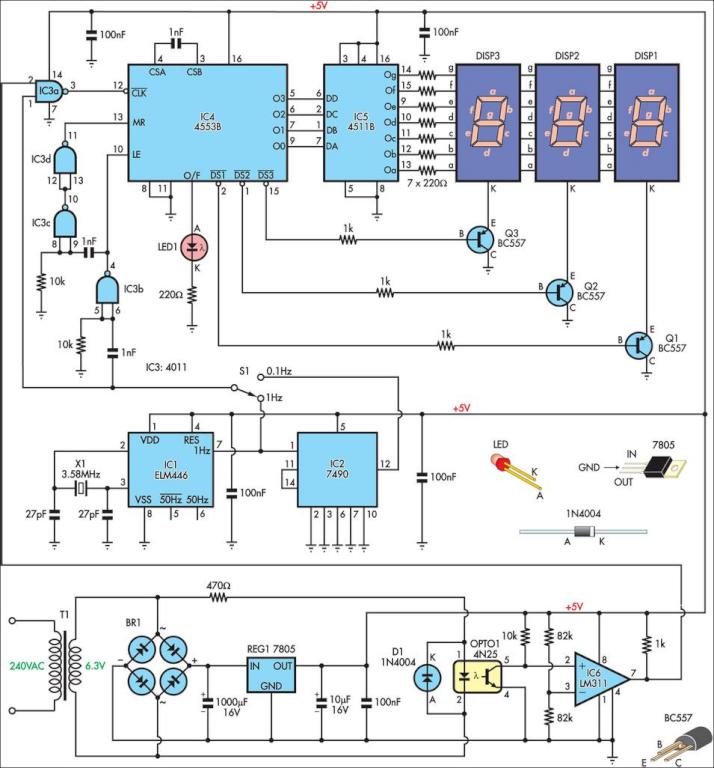
This is a simple frequency counter designed to monitor the 240VAC mains supply. It has a frequency range of 0-999Hz, allowing it to also be used with 400Hz equipment.
The frequency counter circuit operates by measuring the frequency of an alternating current (AC) signal, specifically designed for 240VAC mains supply applications. The circuit can accurately measure frequencies from 0 to 999Hz, making it versatile for various applications, including monitoring industrial equipment that operates at 400Hz.
The primary components of the frequency counter include a microcontroller or frequency measurement IC, which processes the input signal and converts it into a readable frequency output. A transformer may be used to step down the high voltage AC mains supply to a safer level suitable for the circuit. Additionally, rectification and filtering components are necessary to convert the AC signal to a DC signal, which the microcontroller can process.
The circuit may also feature a display module, such as a seven-segment display or an LCD, to provide real-time frequency readings. Input protection components, including fuses and voltage dividers, are crucial to safeguard the circuit from voltage spikes or surges typically present in AC mains.
For accurate readings, the circuit should be calibrated to account for any phase shifts or signal distortions that may occur due to the characteristics of the AC supply. Proper grounding and shielding techniques should be employed to minimize electromagnetic interference, ensuring the frequency counter operates reliably in various environments.
Overall, the design and implementation of this frequency counter provide a practical solution for monitoring AC frequencies, which can be invaluable in maintenance and diagnostics for electrical systems.Here is a simple frequency counter designed to monitor the 240VAC mains supply. It as a frequency range of 0-999Hz, so it could also be used with 400Hz eq.. 🔗 External reference
The frequency counter circuit operates by measuring the frequency of an alternating current (AC) signal, specifically designed for 240VAC mains supply applications. The circuit can accurately measure frequencies from 0 to 999Hz, making it versatile for various applications, including monitoring industrial equipment that operates at 400Hz.
The primary components of the frequency counter include a microcontroller or frequency measurement IC, which processes the input signal and converts it into a readable frequency output. A transformer may be used to step down the high voltage AC mains supply to a safer level suitable for the circuit. Additionally, rectification and filtering components are necessary to convert the AC signal to a DC signal, which the microcontroller can process.
The circuit may also feature a display module, such as a seven-segment display or an LCD, to provide real-time frequency readings. Input protection components, including fuses and voltage dividers, are crucial to safeguard the circuit from voltage spikes or surges typically present in AC mains.
For accurate readings, the circuit should be calibrated to account for any phase shifts or signal distortions that may occur due to the characteristics of the AC supply. Proper grounding and shielding techniques should be employed to minimize electromagnetic interference, ensuring the frequency counter operates reliably in various environments.
Overall, the design and implementation of this frequency counter provide a practical solution for monitoring AC frequencies, which can be invaluable in maintenance and diagnostics for electrical systems.Here is a simple frequency counter designed to monitor the 240VAC mains supply. It as a frequency range of 0-999Hz, so it could also be used with 400Hz eq.. 🔗 External reference
Warning: include(partials/cookie-banner.php): Failed to open stream: Permission denied in /var/www/html/nextgr/view-circuit.php on line 713
Warning: include(): Failed opening 'partials/cookie-banner.php' for inclusion (include_path='.:/usr/share/php') in /var/www/html/nextgr/view-circuit.php on line 713
